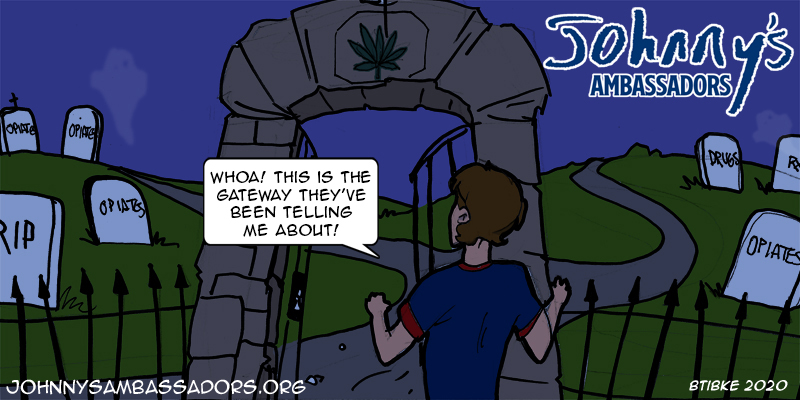By Laura Stack
Every other year since 1991, the Centers for Disease Control and Prevention (CDC) have conducted a study of youth behavior in six significant categories, with the intention of monitoring and managing negative behavior. One of the categories they monitor is Alcohol and Other Drug Use.
The Youth Risk Behavior Surveillance System (YRBSS) last monitored these categories in 2019, with a series of “national, state, territorial, tribal government, and local school-based surveys of representative samples of 9th through 12th grade students,” in conjunction with a much larger sample of middle school students from a smaller number of interested localities. The adolescents involved were aged 13-17.
During each survey, students self-report their behavior on pencil-and-paper questionnaires completed during a single class period. About 4.9 million high school students have completed the questionnaire since 1991. The CDC has estimated the reliability of the questionnaire as good, though they note that students tend to under-report their weight and over-report their heights. In 2019, the YBRSS received 13,677 usable questionnaires from high school students from almost every community in the country, and over 83,000 from middle schoolers in selected cities, states, and territories.
Here are some data from the high school group:
- 36.8% reported lifetime marijuana use.
- 21.7% reported current use (17.1% of 9th and tenth graders and 26.6% of eleventh and twelfth graders)
- No significant differences in use between boys and girls
- Asian-Americans had the lowest use rate at 14.7%; Native Americans topped the list with 48.3%.
- An average of 5.6% of students reported using marijuana before age 13.
While the above may be startling, the most troubling factor to rise out of the data was the association between teen marijuana use and prescription opioid misuse: HAVING EVER USED marijuana was the TOP co-occurring substance use behavior for high school teens who have abused opioids in the past 30 days, even OVER ALCOHOL use in the past 30 days. See the figure below:

Let that sink in—marijuana is now the biggest gateway drug. Whether a high schooler has ever used marijuana in the past is the most common behavior of those who abused opioids in the past 30 days.
Dr. Kevin Sabet, president of Smart Approaches to Marijuana (SAM) and a former three-time White House drug policy advisor said, “This survey confirms a trend we have been noticing: every other drug among young people is going down with the exception of marijuana…we have to understand that drug use does not happen in a vacuum – co-use is a real phenomenon.”
Discouraging marijuana use, then, should help discourage other drug behaviors. While this may seem obvious, a growing false assumption is that marijuana is not a dangerous drug for children, because hey, we did it when we were kids. Understand that todays marijuana is HIGHLY POTENT, and many marijuana products have the raw THC extracted into dabs, shatters, and waxes. Children are highly vulnerable to marijuana use, as it impacts their developing young minds.
Quick recap: marijuana’s cannabinoid chemicals take the place of natural brain chemicals called endocannabinoids, acting as a dimmer switch for the affected neurons. In adolescent users, it hinders brain development, causing everything from a permanent decrease in IQ to increased risk of schizophrenia and suicidal thought and behavior. In between are anxiety and panic attacks; depression; paranoia; psychosis; and marijuana toxicity.
Just because it grows out of the earth doesn’t make it safe. Many other things that grow in the ground are toxic, including deadly nightshade, oleander, and poison ivy, or they can also be made into drugs like poppy. Rattlesnakes and arsenic are natural, too.
The CDC report states: “Specifically, the high rates of co-occurring substance use, especially alcohol and marijuana use, among students currently misusing prescription opioids highlights the importance of prevention efforts that focus on general substance use risk and protective factors.
Clearly, it’s time to step up our anti-marijuana programs and activities, starting younger and striking hardest in minority communities. Please help Johnny’s Ambassadors continue to raise needed funds to develop our anti-marijuana curriculum for teens!



I too am the mom of a son who became addicted to wax and dabbing. This article has given me more insight and education than anything else I have ever read. Everyone said it is just “weeeeeed”. And yes it can’t hurt you it is all natural. One time smoking weed at the age of 19 his life at the age of 23 has been filled with jails, treatment center, homelessness and now I don’t know where he is or what he is doing. I am joining your group so that more can become educated.
Mindy, I am so sorry this happened to your son and glad that you found us. We all understand you here. Please join our Parents of Children with Cannabis-Induced Psychosis (POCCIP) private group for support at https://www.facebook.com/groups/POCCIP. Much love, Laura